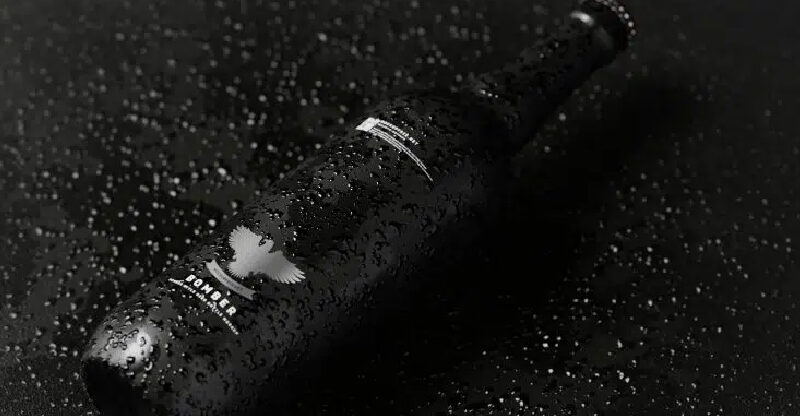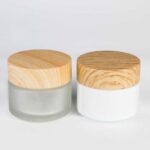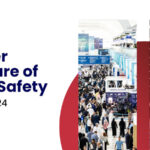Digital Printing on Glass: The New Frontier in Custom Packaging
Digital Printing on Glass: The New Frontier in Custom Packaging
In the fast-paced and consumer-driven world of 2025, the packaging industry has emerged as a crucial battleground for brands vying to capture attention and build customer loyalty.
Amongst the latest innovations, digital printing on glass stands out as a game-changing technology, revolutionizing how businesses will customize their packaging.
Digital Printing on Glass brings with it a fine blend of precision, versatility, and sustainability. Digital printing on glass offers will change how brands can create unique, eye-catching, and eco-friendly packaging solutions – opening up endless opportunities.
Today, we take a deep dive into the technology, benefits, applications, and challenges of digital printing on glass and why we believe it represents the new frontier in custom packaging.
What Is Digital Printing on Glass?
Digital printing on glass is a process where specialized printers use inkjet technology to apply designs, images, or text directly onto glass surfaces. Unlike traditional methods like screen printing, which rely on stencils and fixed patterns, digital printing provides unlimited design flexibility. This technique uses ceramic or UV-curable inks that are permanently bonded to the glass, ensuring durability and vibrant colors.
Key features of digital glass printing include:
· High-resolution graphics: Achieving photorealistic images with exceptional detail.
· Durability: The inks are scratch-resistant, weatherproof, and heat-resistant.
· Customizability: Ability to print short runs or highly intricate designs without high setup costs.
The Technology Behind Digital Printing on Glass
The digital printing process relies on sophisticated technology, including:
1. Inkjet Printers: Their high-precision nozzles spray ceramic or UV-cured inks directly onto glass surfaces. The use of digital files eliminates the need for screens or molds.
2. Adhesion Promoters: A primer layer is often applied before printing to make sure the ink adheres properly to the glass.
3. Curing or Firing Process: After printing, the ink is either UV-cured for instant drying or fired in a kiln, where ceramic inks fuse with the glass surface for a permanent finish.
This method allows for the seamless application of complex, multi-color designs, opening up creative possibilities previously unavailable in the glass packaging industry.
Benefits of Digital Printing on Glass
1. Unmatched Customization
Brands can now create one-of-a-kind packaging tailored to their target audience. Whether it’s limited-edition bottles, personalized labels, or intricate patterns, digital printing makes it easy to stand out on crowded shelves. This flexibility enables brands to respond quickly to trends or seasonal demands, offering customers something fresh and exclusive.
2. Eco-Friendly Solution
Traditional printing techniques often involve excess waste, such as discarded screens and unused inks. Digital printing minimizes material wastage, using only the required amount of ink. Additionally, the process is compatible with recyclable glass packaging, which aligns with the growing consumer demand for sustainability.
3. Cost-Effective for Small Batches
For brands launching niche or luxury products, digital printing is a cost-effective option in contrast to traditional methods, which require large minimum orders, making it ideal for startups or businesses testing new designs.
4. Enhanced Branding Opportunities
Digital printing allows companies to integrate advanced features into their packaging, such as QR codes, augmented reality triggers, or serialized designs. These elements not only enhance the consumer experience but also strengthen brand identity and loyalty.
5. Durability and Performance
Printed designs are resistant to fading, scratching, and exposure to extreme temperatures, making them suitable for the food, beverage, cosmetic, perfume, and pharmaceutical industries.
Applications of Digital Printing on Glass
1. Beverage Packaging
Digital printing has already gained popularity in the beverage industry, particularly for craft beer, wine, and spirits. Eye-catching designs on bottles not only attract consumers but also convey the premium quality of the product. Limited-edition or seasonal releases benefit from this technology, allowing brands to celebrate special occasions with unique designs.
2. Cosmetics and Personal Care
Luxury brands in the cosmetics sector use digital printing to create sophisticated and high-end designs for perfume bottles, cream jars, and serum containers. The precision of digital printing ensures that logos, typography, and intricate patterns are flawlessly executed.
3. Pharmaceuticals
In the pharmaceutical industry, digital printing enhances product identification and traceability. Glass vials and medicine bottles can feature barcodes, batch numbers, and detailed instructions without compromising readability.
4. Food Packaging
From honey jars to spice containers, digital printing elevates the presentation of food products. Vibrant, food-safe designs on glass containers appeal to health-conscious consumers who prefer transparent and sustainable packaging.
5. Home Décor and Fragrances
The home décor segment, including candles and diffusers, benefits immensely from digital glass printing. The ability to create personalized designs adds aesthetic appeal, making these items suitable for gifting or branding.
Challenges in Digital Printing on Glass
1. Initial Investment
Setting up a digital printing system requires significant investment in equipment and training. For small businesses, the upfront costs can be a barrier.
2. Ink Limitations
While ceramic and UV inks are durable, they have limitations in color vibrancy or compatibility with some glass finishes. The ongoing research and development in this field, I am sure, will expand the availability of inks.
3. Complexity of Design
Highly intricate designs may require additional processing or adjustments to achieve the desired effect, adding to production time and costs.
4. Market Competition
As digital printing technology becomes more accessible, the market could become saturated with similar designs, making it harder for brands to differentiate themselves.
The Future of Digital Printing on Glass
The future of digital glass printing is promising, with advancements in technology addressing current challenges and expanding its capabilities. Innovations like 3D printing on glass surfaces, biodegradable inks, and AI-driven design customization are expected to redefine the industry further.
Moreover, integrating smart packaging features like NFC tags or embedded sensors will add an interactive dimension to glass packaging. These developments will not only enhance the consumer experience but also provide manufacturers valuable insights into consumer purchase journey & behavior.
Sustainability and Consumer Trends
As sustainability takes center stage in consumer preferences, digital printing on glass aligns perfectly with the demand for eco-friendly solutions. Glass, being 100% recyclable, combined with minimal-waste digital printing, offers an ideal solution for environmentally conscious brands.
Consumers today value transparency, both literally and figuratively. The use of clear glass packaging with creative printed designs allows brands to showcase the purity of their products while telling their sustainability story.
Conclusion
Digital printing on glass represents a monumental shift in custom packaging, offering brands a unique combination of flexibility, sustainability, and high-quality design. From enhancing the aesthetic appeal of perfume bottles to improving traceability in pharmaceutical packaging, this technology is revolutionizing how products are presented and perceived.
As industries continue to embrace digital printing, it is clear that this innovative approach is not just a trend but a transformative force in the packaging world. With its ability to cater to niche markets, create personalized experiences, and align with sustainability goals, digital printing on glass is definitely the new frontier in custom packaging.
This article has been submitted byNitin Chaudhary
.



